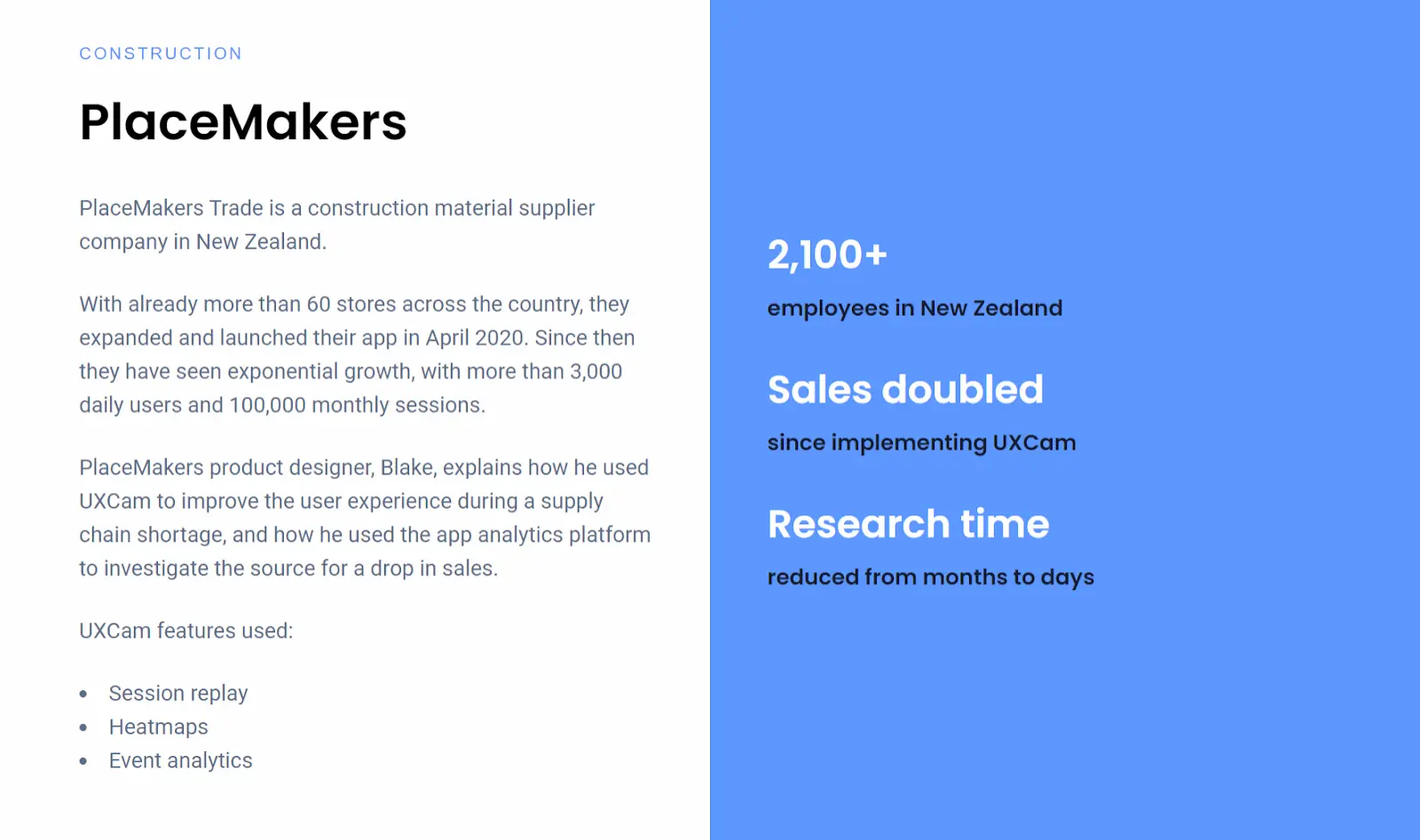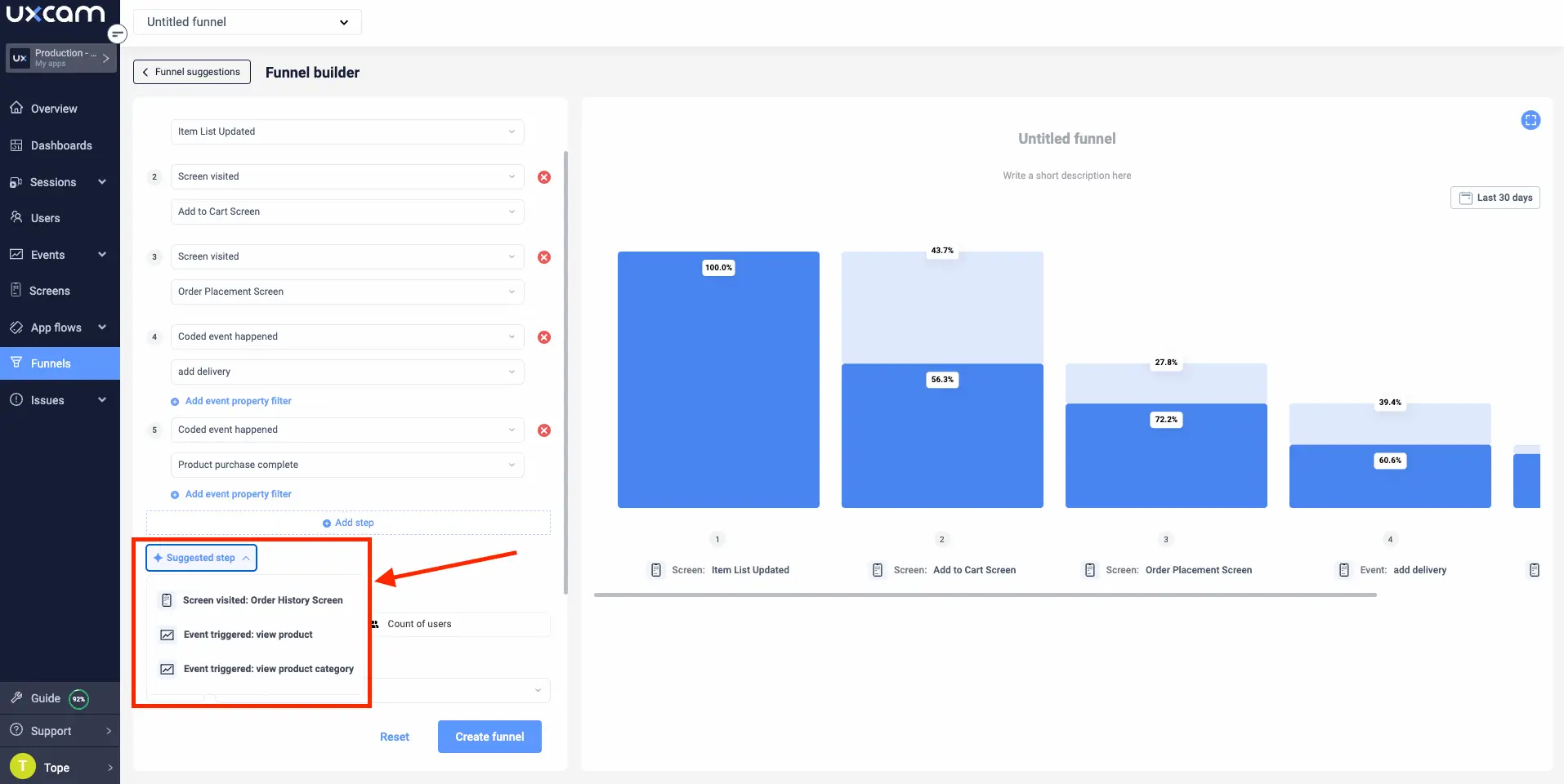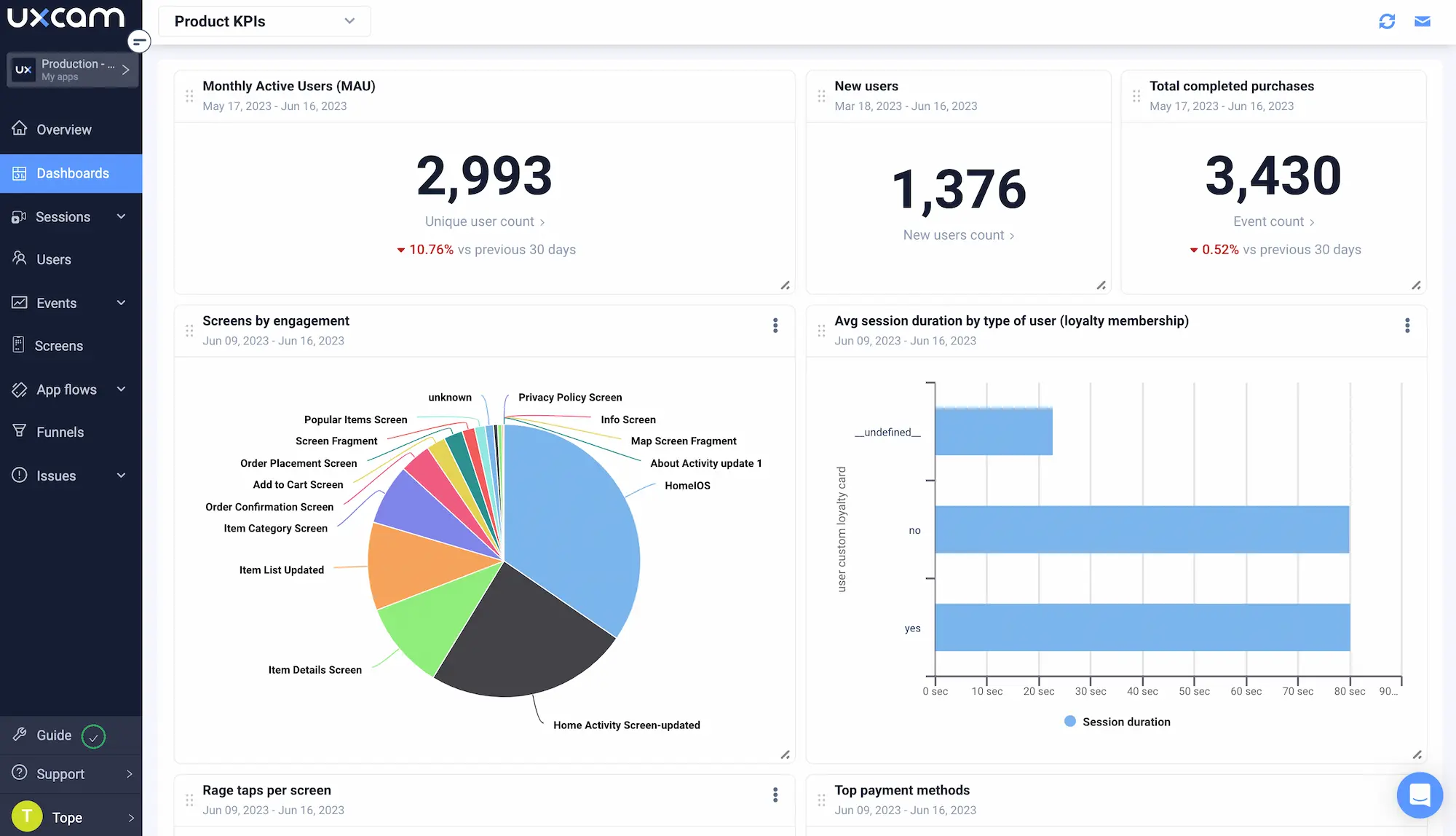Back to blog
5 MIN READ
E-commerce Customer Analytics - How to Drive Growth With Data
PUBLISHED
15 January, 2024

Product Analytics Expert
Understanding your customers is probably the most important aspect of running an e-commerce business. You need to know who you’re targeting with enough fidelity to reliably reach them with your marketing, products, prices, etc.
So, how do we use e-commerce customer analytics to drive growth for ecommerce businesses?
In this guide, we give you a step-by-step process to follow for understanding and analyzing your e-commerce customers. We’ll cover the tools you need, the data you should collect, and how to use that information to make informed business decisions.
Why listen to us?
UXCam is a mobile-first product analytics platform that helps hundreds of global e-commerce brands understand user behavior and optimize their mobile apps for revenue, engagement, and retention.
Today, we’ll be using that wealth of experience to help you understand your e-commerce customers and show you how to use that understanding to grow your business.
Let’s get started.
Helpful summary
Overview: This article offers an overview of e-commerce customer analytics—what it is, how to do it, and why it’s important.
Why you can trust us: We’ve helped thousands of businesses find success with mobile e-commerce through data-driven development.
Why this is important: Understanding your customers through analytics is important for making informed decisions.
Action points: Choose analytics tools for key touchpoints and channels, look for patterns and trends using visualizations, and validate your hypotheses with experimentation.
Further research: Check out our guide to the best e-commerce analytics tools.
What is e-commerce customer analytics?
E-commerce customer analytics means collecting data on your customers and using it to gain insights into their behavior, preferences, and needs.
This data can come from all kinds of sources, including:
Mobile app usage
Purchase histories
Surveys and reviews
Social media interactions
Website traffic and engagement
There isn’t one correct or viable way to analyze this data, either. Depending on your goals and the data you have access to, you might analyze customer data using session replays, customer surveys, Google Analytics, heatmaps, user feedback, and more.
E-commerce customer analytics example: PlaceMakers
PlaceMakers is a leading construction supplies company in New Zealand.
The company’s mobile app is a major revenue generator, but the team was struggling to understand why sales were down after the launch of a new, seemingly user-centric feature. They turned to UXCam’s product analytics suite for answers.

Using session replays, the team quickly realized that their messaging for low-stock products was too strong—customers were scrolling past even though the products they were looking for were available for purchase.
Softening the messaging led to a 200% increase in sales.
What are the benefits of e-commerce customer analytics?
Optimized marketing
E-commerce customer analytics is one of the most effective ways to optimize your marketing campaigns.
For starters, you can directly analyze what campaigns perform best so that you can start replicating successes. But beyond that, you can start to find new opportunities based on shopping behaviors, user preference data, and more.
Reduced customer churn
E-commerce customer analytics is instrumental in reducing customer churn. According to many studies, 80% of future revenue will stem from just 20% of your existing customers—finding and retaining these valuable customers is key.
By using customer analytics, you can identify patterns in your most loyal and profitable customers. This allows you to tailor your offerings and marketing strategies to meet their needs, resulting in increased loyalty and reduced churn.
Increased conversion rates
Finally, conversion rate optimization (CRO) is largely made possible by customer analytics. By analyzing how customers interact with your website or app, you can identify areas for improvement and make data-driven changes to increase conversions.
How to conduct e-commerce customer analytics
Step 1 - Define your goals and research questions
Start by clearly defining your goals and what you hope to learn from customer analytics. This will help guide your research and ensure that you are collecting relevant data.
Some possible research questions to consider:
What are the demographics of our most valuable customers?
What products do they purchase most frequently?
How do they interact with our website or app?
What factors contribute to their loyalty and repeat purchases?
Some of these questions likely seem tricky to answer, but with a powerful analytics solution like UXCam it’s easy to zero in on exactly the data points you’re looking for.
Step 2 - Set up tracking for relevant touchpoints
Next, look at your customer journey and identify key touchpoints you’d like to collect data on. It isn’t necessary to collect data on every touchpoint if you lack the resources or capabilities—prioritize touchpoints that the majority of your customers are likely to interact with.
These could include:
Website
App
Social media platforms
Customer service channels
For each touchpoint, you’ll need a tool that can collect and analyze data specific to that channel. For example, you can use UXCam as an all-in-one analytics solution for your mobile app—just install a single code snippet, and you’re good to go.
You should also identify important metrics for each touchpoint. For example, on your website, you may want to track things like time spent on page, bounce rate, and conversion rates.
Step 3 - Collect and analyze data
The next step is collecting data.
For some touchpoints and tracking methods, this will happen in the background—UXCam tracks users as they use your mobile app without you having to do anything else. For others (like surveys) you’ll need to actively reach out and collect data.
When collecting data, be sure to keep an eye on the following:
User behavior: How are customers interacting with your brand? Are they using certain features more than others? What actions are they taking?
Pain points: Are there any common issues or frustrations that users encounter while interacting with your brand?
Conversion rates: How successful are you at converting leads into customers? What steps can be taken to improve conversion rates?
Step 4 - Identify patterns and trends
Once you have some data, it’s time to look for patterns and trends. You’ll do this using visualizations (charts, graphs, etc.) and data analysis (sorting, filtering, etc.) to highlight any interesting or important insights.

For example, with UXCam you might create segments for device type and use these to filter your conversion data. If iOS users are converting 20% less than Android users, that could be a potential trend to investigate.
It’s also important to track any changes over time.

Are there certain times of the year or seasons when your conversion rates are higher? Is there a specific marketing campaign that resulted in a significant increase in conversions? Create dashboards in your analytics tool to monitor these changes and keep track of any patterns.
Step 5 - Validate insights and make data-driven decisions
Based on your analysis, you can start to validate your findings with experimentation.
This means using tools like:
A/B testing
Card sorting
Click tracking
Live user testing
Here’s how the process works:
Turn a pattern or trend from your analysis and turn it into a hypothesis. For example, if your analysis reveals that lots of app users are abandoning carts when asked to sign up for an account, you might hypothesize that “offering a guest checkout option will increase conversions.”
Develop an experiment that tests the hypothesis. In our example, an obvious choice would be to develop an A/B test where two groups of similar users are shown two different versions of the checkout process—one with a guest checkout option and one without.
Track the results and analyze the data. In our example, we would track the conversion rates for both groups to see if offering a guest checkout option actually did increase conversions.
Use the results to make informed decisions. If the data shows that the hypothesis was correct and offering a guest checkout option did indeed increase conversions, we can confidently add this feature into our app.
Conclusion
E-commerce customer analytics is a powerful tool that helps businesses make better decisions about products, marketing strategies, and overall customer experience. It gives you a window into the minds of your customers and allows you to create personalized experiences that will keep them coming back for more.
Looking for an all-in-one mobile analytics solution? UXCam has helped thousands of e-commerce brands succeed on mobile using a suite of powerful analytics tools—session replays, heatmaps, funnel analysis, and more.
Sign up for a free trial today to see how UXCam can help your business grow!
You might also be interested in these;
Ecommerce product management guide for mobile teams 7 Astonishing mobile e-commerce UX statistics (Infographic)
The only 10 slides you need to present session replay findings
8 Best UX analytics tools and software
AUTHOR

Tope Longe
Product Analytics Expert
Ardent technophile exploring the world of mobile app product management at UXCam.
What’s UXCam?
Related articles
App Analytics
Mobile App Tracking: Practical Guide & Best Tools [2026]
The best tracking tools for mobile...

Jonas Kurzweg
Product Analytics Expert
App Analytics
Top Analytics SDKs 2026
Pick the right analytics SDKs to improve your app's...

Jonas Kurzweg
Product Analytics Expert
Product best practices
8 Best UX Analytics Tools and Software We’ve Tested 2025
A good UX design is key when it comes to user satisfaction. Learn about five of the best UX analytics tools you can use to get valuable insights about user...

Jonas Kurzweg
Product Analytics Expert


